|
General Session Descriptions & Speaker Biographies
Opening Keynote Presentation: Monday, October 19, 2015 | 9:30am-11:30am
Florida Wildlife Corridor: Connecting to Keep Florida Wild
Mallory Lykes Dimmitt, Florida Wildlife Corridor Executive Director
www.floridawildlifecorridor.org
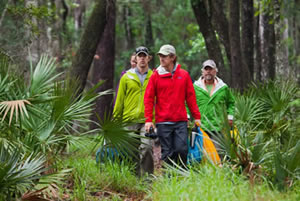 Joining the Master Gardeners as the opening keynote is the Florida Wildlife Corridor. Master Gardeners will hear about their adventures and view the documentary. Joining the Master Gardeners as the opening keynote is the Florida Wildlife Corridor. Master Gardeners will hear about their adventures and view the documentary.
The Florida Wildlife Corridor is a statewide vision to keep Florida wild by integrating Florida’s leading conservation science with compelling fine art images and rich storytelling to raise awareness about the Corridor and the need to connect and protect it.
In 2012, the first expedition, Everglades to Okeefenokee, was launched. Bear biologist Joe Guthrie, conservationist Mallory Lykes Dimmitt, photojournalist Carlton Ward Jr., and filmmaker Elam Stoltzfus trekked 1000 miles for 100 days from the Everglades National Park toward Okefenokee National Wildlife Refuge in southern Georgia. The travelers traversed the wildlife habitats, watersheds, and participating working farms and ranches that comprise the Florida Wildlife Corridor opportunity area.
In January 2015, the second expedition, Glades to Gulf, was launched. It was a second 1000-mile leg of the Corridor from Central Florida to the Gulf Coast, through the Big Bend, and across the Panhandle all the way to Alabama, where the trek concluded at the Gulf Islands National Seashore.
Mallory Lykes Dimmitt
is a seventh generation Floridian whose childhood was partly spent exploring the lands and waters of central Florida. She pursued her passion for the outdoors by receiving her B.S. in Natural Resources from the University of the South in Sewanee, Tennessee. She was also awarded a Doris Duke Conservation Fellowship at Duke University’s Nicholas School of Environment where she earned a Master’s of Environmental Management.
General Session 2: Monday, October 19, 2015 | 5:00pm-6:00pm
Bromeliads, Backyards, and Mosquitos
Dr. Roxanne Connelly, UF/IFAS Professor and Medical Entomology Specialist
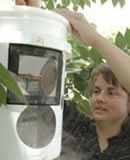 Mosquitoes occur in every Florida county and can be found in most backyards. The mosquitoes that occur in bromeliad tanks and water holding containers can transmit dengue, chikungunya, and dog heartworm. It is essential that Floridians know how to recognize the mosquitoes that can cause disease and to learn techniques to reduce the mosquitoes to prevent bites and infections. Mosquitoes occur in every Florida county and can be found in most backyards. The mosquitoes that occur in bromeliad tanks and water holding containers can transmit dengue, chikungunya, and dog heartworm. It is essential that Floridians know how to recognize the mosquitoes that can cause disease and to learn techniques to reduce the mosquitoes to prevent bites and infections.
Dr. Roxanne Connelly
is an Extension specialist and Professor of Medical Entomology at the University of Florida in the Florida Medical Entomology Laboratory. She holds a Ph.D. from Louisiana State University. She began with UF/IFAS in 1999 working on mosquito biology and control. Her responsibilities include maintaining close contact with over 50 mosquito control districts in Florida and providing training and information on biting and blood-feeding insects to all Florida county extension offices.
General Session 3: Tuesday, October 20, 2015 | 8:00am-9:30am
Underutilized and Fantastic Woody Plants for Florida Landscapes
Dr. Gary Knox, UF/IFAS Woody Plants Specialist
Dr. Jason A. Smith, UF/IFAS Forest Pathologist
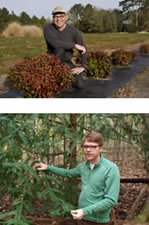 Florida lags behind in the use of new and improved selections and species of woody plants in landscapes. New pests and diseases, the increasing need for pollinators, and difficult planting sites in urban landscapes have led to a significant need to diversify the plants used in today's landscapes. There are countless new cultivars of woody plants, many of them native species as well as rare and underutilized native and exotic woody plant species that should be used more in Florida. This presentation will highlight the attributes of these great plants with a combination of high quality photos and detailed cultivation information, and will discuss their availability (or lack thereof) from nurseries in the region. Florida lags behind in the use of new and improved selections and species of woody plants in landscapes. New pests and diseases, the increasing need for pollinators, and difficult planting sites in urban landscapes have led to a significant need to diversify the plants used in today's landscapes. There are countless new cultivars of woody plants, many of them native species as well as rare and underutilized native and exotic woody plant species that should be used more in Florida. This presentation will highlight the attributes of these great plants with a combination of high quality photos and detailed cultivation information, and will discuss their availability (or lack thereof) from nurseries in the region.
Dr. Gary Knox's
research interests focus on evaluating species and cultivars of woody plants for their invasive potential as well as for ornamental characteristics. In addition to research plantings, Dr. Knox is working with a nonprofit volunteer group to develop Gardens of the Big Bend, a series of botanical, teaching, and evaluation gardens at the North Florida Research & Education Center, including the Magnolia Garden, recently inducted as part of the National Collection of Magnolia.
Dr. Jason Smith is Co-Director of the Emerging Threats to Forests Research Team, Associate Professor of Forest Pathology, and State Forest Health Extension Specialist at the University of Florida. He specializes in biology, diagnosis, and management of fungal diseases with emphasis on new tree health issues. His extension program focuses on technology transfer of novel tree diseases diagnostic methods, educating the public about emerging diseases, and providing training on diseases and decay in urban trees.
Drs. Knox and Smith have both presented, written, and researched on underutilized plants. Both are considered experts in woody plant development, cultivation, and selection.
General Session 4: Tuesday, October 20, 2015 | 5:00pm-5:45pm
Mothball Tales: The Good, the Bad, and the Smelly
Dr. Rebecca Baldwin, UF/IFAS Entomologist
Paul Mitola, Florida Department of Agriculture and Consumer Services (FDACS)
 You all have a tale of using mothballs in an attempt to protect possessions from unwanted pests. Did that tale involve illegal activity? Mothballs are in fact a pesticide and come under the Florida Pesticide Law. Have you had a neighbor throw mothballs under the porch or into the attic or even in an outdoor trashcan in an attempt to dissuade wildlife from taking up residence? Those uses are considered a violation and could result in a hefty fine. Join us for Mothball Tales, a look at intended uses, health effects of children and adults, and how mothballs can be properly used. You all have a tale of using mothballs in an attempt to protect possessions from unwanted pests. Did that tale involve illegal activity? Mothballs are in fact a pesticide and come under the Florida Pesticide Law. Have you had a neighbor throw mothballs under the porch or into the attic or even in an outdoor trashcan in an attempt to dissuade wildlife from taking up residence? Those uses are considered a violation and could result in a hefty fine. Join us for Mothball Tales, a look at intended uses, health effects of children and adults, and how mothballs can be properly used.
Dr. Rebecca Baldwin is an assistant professor and the undergraduate coordinator for the University of Florida Entomology and Nematology Department. Rebecca shares her love of entomology and education by directing the UF Entomology Education and Outreach Program and by teaching general education and introductory entomology courses to undergraduates. Her research program focuses on IPM tools for crawling pests and she provides CEU and recertification training for pest managers.
Paul Mitola
began working for the Florida Department of Agriculture & Consumer Services (FDACS) after 22 years in the pest control industry, six of which were with the University of Florida. He was an inspector for six years, then became the training coordinator, and is now an Environmental Consultant. He provides training for FDACS inspectors, collects field data for consumer issues, and provides continuing education for the pest management industry in Florida.
General Session 5: Wednesday, October 21, 2015 | 8:30am-9:30am
Poinsettias – Answering Questions about This Popular Holiday Plant
Dr. Jim Barrett, UF/IFAS Horticulturist and Professor Emeritus
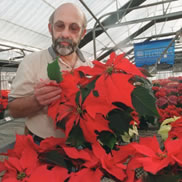 Poinsettias are enjoyable for many who like plants and holiday decorations. However, they are just mysterious enough that there are always many questions such as: how to keep them alive when you get them home, how to get them to reflower, are they poisonous, what to look for when buying one, how to transplant into the landscape, where to find the special ones, what is different about poinsettias in Florida, and others. Along with details of being successful with poinsettias, many of the newer and novel varieties will be presented – not all poinsettias are red. Poinsettias are enjoyable for many who like plants and holiday decorations. However, they are just mysterious enough that there are always many questions such as: how to keep them alive when you get them home, how to get them to reflower, are they poisonous, what to look for when buying one, how to transplant into the landscape, where to find the special ones, what is different about poinsettias in Florida, and others. Along with details of being successful with poinsettias, many of the newer and novel varieties will be presented – not all poinsettias are red.
Dr. Jim Barrett joined the University of Florida in 1978. He has over 30 years of experience doing research on poinsettias, which includes variety evaluations, consumer preference evaluations, interior performance, and crop production issues.
His teaching and research responsibilities have revolved around the challenges of producing commercial crops in Florida’s unique environment. An important component of this work has been evaluating and selecting improved varieties for use in Florida. As a result of this, the University of Florida has developed one of the world’s leading poinsettia research and evaluation programs.
Closing Keynote Presentation: Wednesday, October 21, 2015 | 11:15am-1:00pm
Our Water, Our Future
John Moran, Florida Nature Photographer and Springs Eternal Project Co-Director
www.johnmoranphoto.com
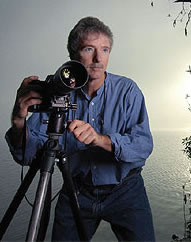 Once a source of awe, Florida's springs are now a source of deep concern. Although vital to the ecological and economic health of Florida, our springs are imperiled—due to pollution, neglect and the groundwater demands of a thirsty state. As the Everglades are to South Florida, our springs are central to Florida’s identity and wellbeing. They are Florida’s blue-water calling card to the nation and the world. Join John Moran for an engaging look at these windows into the aquifer, which he has been photographing for more than 30 years. In 2012, John partnered with artist and art historian Dr. Lesley Gamble to create the Springs Eternal Project, after realizing that his beautiful nature pictures of Florida tell an incomplete story and that he has an obligation to more fully show and tell the truth as he sees it. Their collaboration fills museum walls, wraps city buses, and continues to develop creative forms of educational outreach inspiring Floridians to value, conserve and restore our precious waters. Learn more at SpringsEternalProject.org. Once a source of awe, Florida's springs are now a source of deep concern. Although vital to the ecological and economic health of Florida, our springs are imperiled—due to pollution, neglect and the groundwater demands of a thirsty state. As the Everglades are to South Florida, our springs are central to Florida’s identity and wellbeing. They are Florida’s blue-water calling card to the nation and the world. Join John Moran for an engaging look at these windows into the aquifer, which he has been photographing for more than 30 years. In 2012, John partnered with artist and art historian Dr. Lesley Gamble to create the Springs Eternal Project, after realizing that his beautiful nature pictures of Florida tell an incomplete story and that he has an obligation to more fully show and tell the truth as he sees it. Their collaboration fills museum walls, wraps city buses, and continues to develop creative forms of educational outreach inspiring Floridians to value, conserve and restore our precious waters. Learn more at SpringsEternalProject.org.
John travels the Sunshine State with his cameras, seeking his vision of natural Florida as it may have appeared to Ponce de Leon and other early strangers in paradise. A graduate of the University of Florida, John’s photography has appeared in numerous books and magazines including National Geographic, Life, Time, Newsweek, Smithsonian, The New York Times Magazine and on the cover of the National Audubon Society Field Guide to Florida. He has been named Photographer of the Year for the Southeastern U.S. by the National Press Photographers Association. His photograph of alligators at Paynes Prairie State Park was selected as the top-placing American photograph in the United Nations Earth Summit photo contest. Several book projects are now in the works, including one titled John Moran’s Florida: One State, Many Worlds. On photographing the nature of Florida, Moran says, “Truly a universal language, photography can help us better understand and appreciate the many gifts of nature bestowed upon this great state we call home.”
|